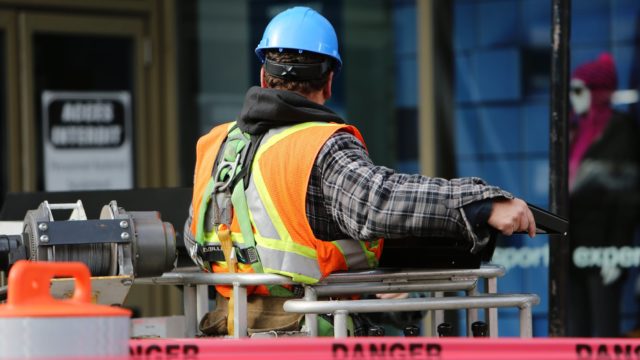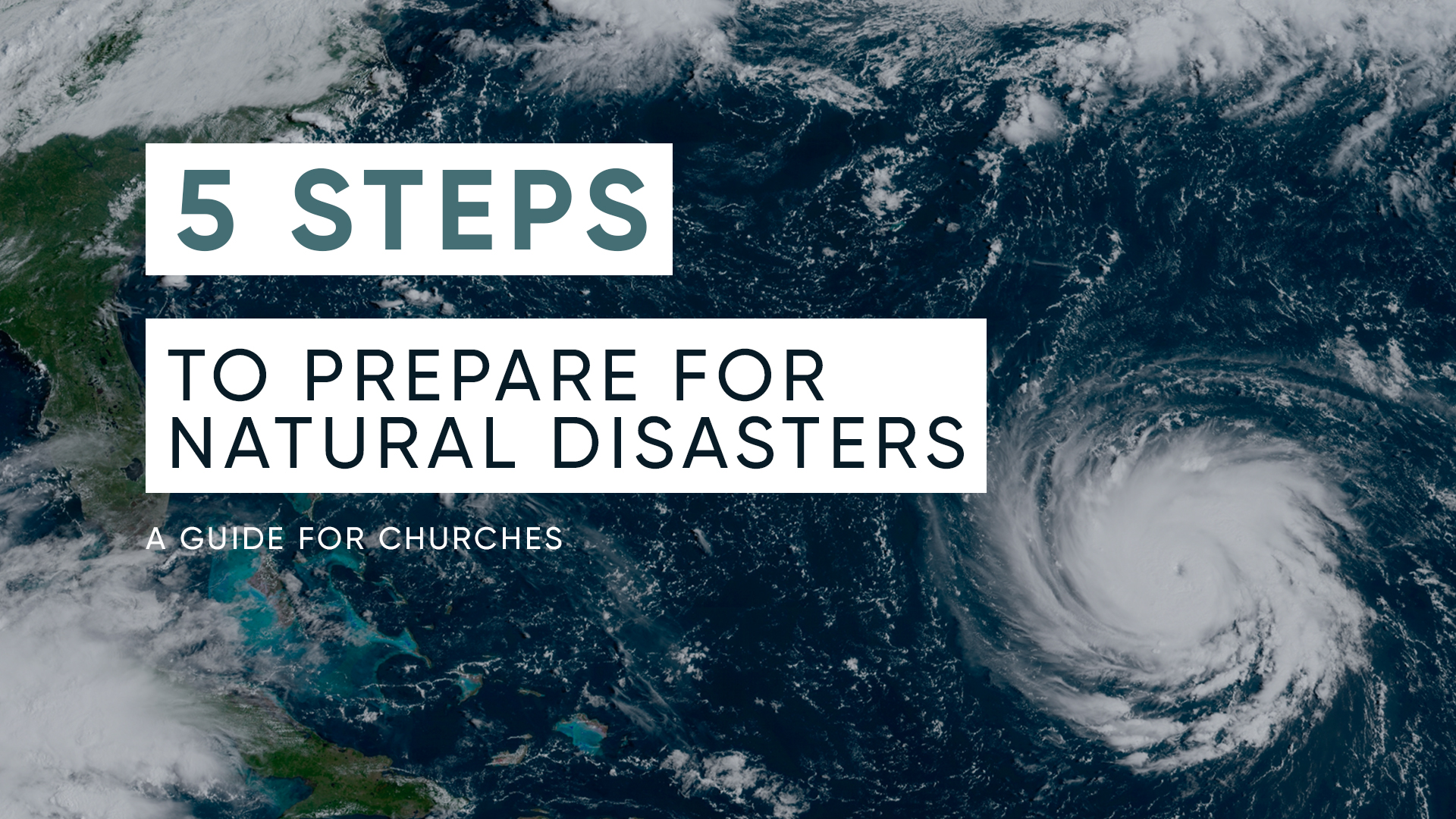5 Things Churches Need To Do During Natural Disasters
Disasters happen. Are you prepared?
Hurricanes, floods, wild fires, earthquakes, power blackouts, and epidemics are just a few examples of disasters that could disrupt the lives of your congregation and community. Because preparing for disasters forces your church leadership, staff, and members to think about uncomfortable topics, proactive leadership from the pastor and church leadership is required to combat these natural tendencies.
Keep your focus on the people: When disaster strikes and people flock to your doors, seeking practical help as well as spiritual comfort, your church should be ready to respond in an organized and compassionate manner. Here are five crucial tips to maximize effectiveness and minimize problems before, during, and after an emergency situation.
Be prepared when congregation members and people from your community turn to your church for temporal, as well as spiritual support.
1. Evaluate risks & resources in your area through data

Disaster preparedness entails three key processes: planning, preparation and response. As your leaders prepare and plan for an event and/or deal with the aftermath, the first step is to familiarize yourself with federal, state, and local data sources to determine the risks in any given area. This wealth of information includes declared disaster areas, flood inundation maps, ShakeMaps that track the aftermath of earthquakes, and more.
In addition, your church management software (ChMS) can provide the backbone for your preparations. The right ChMS connects you with church members who are either affected or who live close enough to volunteer in the event of an emergency.
This type of tool also helps you identify people with necessary skills or relevant professions. Recruit active members of the congregation with specific skills, such as medical, emergency response, law enforcement, facilities management, and volunteer coordination expertise. That way, you can turn to them for information or assistance. Your ChMS also can enable you to assist authorities during critical situations such as making them aware of homes where small children reside.
ChMS solutions from companies such as Elexio enable you to set up plans, resources, and communications networks that you can leverage in the event of a disaster.
2. Raise money through focused online giving

If you are not located in a high-risk area, the likelihood that your church will be involved in a disaster is low. But opportunities to help other communities affected by disasters abound. In the event of an emergency, you can quickly set up an online donation form to enable your members to give back financially quickly, safely, and easily.
To enhance the spirit of giving, be specific in your request. Ensure your members are confident that their hard-earned money will aid specific recovery efforts after a disaster. For example, after a hurricane, recovery can be particularly difficult for people who do not have flood insurance. Setting up a benevolence fund is an excellent way to help people who need it most.
Proving that every dark cloud can have a silver lining, a nearby disaster can serve as an opportunity to encourage your congregation to embrace mobile or online giving. Leverage a giving provider that includes text-to-give or a mobile giving app for those who are not normal givers, but might want to make a one-time gift. Sometimes the positive after effects of this difficult situation can be felt long after cleanup and recovery efforts are complete.
If your ministry doesn’t have an online giving provider, you can look into services like Sharefaith Giving if your church already has a Sharefaith membership.
3. Be vigilant about background checks

It’s tempting to leap into action after a disaster occurs — perhaps you want to mobilize a team of on-the-ground helpers or immediately open your facilities to house those who were affected. However, it’s crucial to employ background checks both to protect victims from further harm and reduce risks to your church. It’s still important to run background checks as part of your due diligence, especially when victims from disaster are at their most vulnerable.
Keep in mind that many people who step forward during emergencies are not in your typical volunteer pool — in fact, they may not even be members of your congregation. Particularly when disaster victims include families, it’s vital to carefully screen volunteers — even if they are simply collecting food donations or passing out water bottles at the facility where you’re housing victims.
Sharefaith Background Checks is a service powered by Protect My Ministry, a trusted background check service that integrates perfectly with any church’s application screening process.
4. Focus on clear and timely communications

Confusion abounds before, during, and after a disaster — and rapid communications can make all the difference. It’s important to keep different communication channels in mind, including: text, email, and making phone calls. There are ways to quickly get the word out about disasters and pass on crucial and timely information to church members and volunteers who are affected.
When severe weather hits — such as a hurricane or tornado — use your communication channels to mobilize volunteers, share information about emergency services to congregation members in the path of the storm, and solicit giving specifically for that disaster.
During the aftermath, keep the communication going and offer updates, continuing to drum up support from volunteers and those interested in donating — because, as we all know, attention spans are short and the urge to give can wane once an event is over.
Good communication is essential. Your ChMS should contain a robust communications module that includes mass messaging.
5. Position your website as a communications hub

In some parts of the country, you can prepare for events long before they occur. For instance, if your region is prone to disasters such as earthquakes, wildfires, tornadoes, hurricanes or flash floods you can publish a plan on your website. This will let your church members as well as those in the local community know that you care and are happy and prepared to assist, should disaster strike.
Your site is also an excellent spot to provide a wealth of information for community members so they can craft disaster plans for their families. You can link to key websites for disaster preparedness, social services, and emergency services. Ready.gov, the website of the Department of Homeland Security, provides a wealth of information you can pass along.
Remember to reach out to resources outside of your church even before you need them. In your local area, it’s a good idea to build strong relationships with medical facilities, police, fire, and emergency responders, as well as volunteer service organizations such as Kiwanis, Lions Clubs, and Rotary International.
Make sure your website is robust and makes getting to important information easy for the people you serve. Sharefaith Websites provides everything your church needs to communicate clearly and effectively to your online audience.
Be prepared.
During a crisis, communities tend to turn to churches for support. If you don’t plan for the worst, you may find yourself unprepared, overwhelmed, and unable to provide the necessary assistance for members of your congregation and your community. Without proper preparation, you risk exhausting your resources, responding inadequately, or — worst-case scenario — failing to respond at all.
Your disaster plan will never be complete, because people and situations change. Make disaster planning an ongoing process. That way, when need arises in your community, you can rest assured your church has done everything possible to assist those in need.

